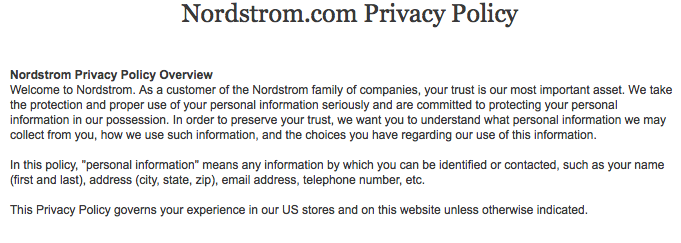Even though automation software is a proven essential for strong marketing, some companies are still wary about its practices. Oftentimes, marketers are hesitant to apply automation to sales because they have difficulty trusting technology – especially when automation plays a large role in marketing.
We’ve heard that some marketers are uneasy trusting the accuracy of data collected, messages sent, and customer privacy. Because automation is more “machine” than “man,” implementing it into marketing may require a little more faith.
And we get it.
Letting go of your marketing reigns to let software play a large role in your marketing strategy can be unnerving. However, companies should cast their fears aside because – all things considered – automation is a tool that can be trusted. To help marketers feel more at ease with this technology, we are addressing three common trust issues that marketers have with automation.
Trusting data in automation
For the most part, data gathered and implemented in your automation software is reliable. This data comes in two forms.

Companies can directly ask customers to share personal information with them. For example, retailers often ask for a consumer’s name and email address for sending newsletters or special offers. Since this information comes directly from the customer, companies should feel comfortable trusting and using it to tailor messages. Typically, any mistakes in customer-relayed information come as results of a spelling mistake or typo when sharing information.
Companies can also gather information from clickstream data and analytics. First party data reflects information gathered by one’s own company. To gain more trust in a company’s first party data, companies should grasp a complete understanding of how the process works.
Third party data reflects information gathered by another source. This is typically where companies falter in the trust department. To put your mind at ease, perform thorough research about the quality of third party – rather than blindly accepting data. Determining the strength and reliability of the third party can prevent dirty data from being thrown into the automation’s data pool.
Trusting automation to deliver messages properly
Some marketers may not trust automation to send relevant messages to its consumers. However, by creating a checklist with basic criterion, marketers can ensure that the right messages are sent to the appropriate customers.
This checklist operates on the basis of the simple logic format, because X happens, Y will likely follow. The logic behind a checklist ensures that messages with a personalized element are sent to specific users.


For example, a customer who regularly sorts products by “prices: low to high” may be categorized as a bargain shopper. In a preprogrammed checklist, this criteria might look like, Because this customer shops sales, he or she will positively respond to information about discounts. Based off this assumption, the automation software may send the consumer emails with special offers and sales.
Companies should trust that these messages are sent to the right people because they, themselves, are designing which customers receive which messages. Because companies are responsible for developing their checklists, marketers should trust that the checklist reflects accurate assumptions. If the assumptions are not relevant or correct, marketers should look to the checklist developers. The automation’s job here is easy – simply send out the messages that fit basic criteria at a designated time.
Trusting automation to keep information safe
Another common trust issue marketers have concerns the privacy of their customers. With recent hacks in the datasphere, some companies are hesitant to trust the cloud to store customer data.
With that in mind, companies should take the necessary steps to ensure customer data remains safe. Familiarizing oneself with customer data can alert marketers when usual inconsistencies come up. Companies should also perform thorough background checks before they hire – as employees have the most access to customer data. An untrustworthy employee may be the cause of a data breach. Companies can implement security testing, or penetration testing, to evaluate the strength of their data protection measures.
And let’s not forget…
Marketing should not completely rely on technology. A team of data analysts and marketers should regularly confirm that data analysis is accurate, messages are relevant, and that information stored is safe. Although automation is trustworthy, double checking its accuracy can prevent the unlikely rough patch in a marketing campaign.
Feeling a little better about implementing automation to your marketing? Learn why we’re saying automation is a long-term investment, or get the scoop on our very own NectarSuite automation.







